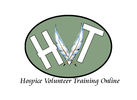By Mary Anne Ramer, copyright 2009
Four years ago, I was a New York City-based writer and former journalist, newly semi-retired and looking for new ways to serve and give back to my community for all that I had received in my life.
I spent over nine months investigating a range of volunteer possibilities and finally chose hospice. I chose Continuum Hospice Care and was impressed with their initial and ongoing training. I can most easily and efficiently serve their clients in my area of Manhattan. They also offer volunteers a wide range of roles to fit both their patients’ needs and the changing circumstances of volunteers’ lives.
In the past three years, I have had three hospice patients as my clients (my term for the people I see weekly, since I have no medical, nursing or social work degree). Their ages range from 89 to 101. Two have heart conditions and one has cancer. Although none have Alzheimer’s or dementia, all have macular degeneration and the weakness that comes both with their illness and their age.
Whenever I choose to reveal to any friend or acquaintance that I am a hospice volunteer, I’m met with a range of responses, most of which are dead wrong or at best ill-informed.
I’d like to present, and refute, what I consider the seven most pernicious myths about hospice.
1.) “To volunteer with the dying, that is SO SAD! How can you stand it!”
While sadness is always a factor in many things in life, it is no more a factor in hospice than in many other things. In fact, I tell people that my little selfish secret is that I volunteer to rehearse for my own end of life! Also, there is great care, love and even humor in serving my clients. You are never more your self, your true self, than when you at the last. The joy of a 100th Birthday celebration with over 60 guests is something I will always cherish.
2.) “You mean you’re there when someone who’s not even a relative or friend is dying?”
If I were to train as a death doula, I may well be at a person’s actual death. However, in nearly all cases, hospice volunteers are not present at the time of their client’s death, unless they have specifically asked the person and the family if they may attend the dying. I would consider it an honor, not an ordeal.
3.) “Why do these people need volunteers?”
Although hospice care inherently includes a team (which is made up of doctors, nurses, social workers, health aides, spiritual support providers, and other skilled professionals) , it is the only Medicare/Medicaid funded service that REQUIRES volunteer service be provided. From the patient’s and family’s viewpoint, a volunteer is a non-paid, non-professional who has no legal, financial or even moral obligation to attend to a dying person. So volunteering is a true gift, as much as donating blood. And let’s be clear that the patient nearly always, and the family usually, become very aware of and grateful for that gift.
4.) “To be a volunteer, you have to go to a hospital. I don’t like hospitals.”
A small percentage of hospice patients are in a hospital for any time. The vast majority are cared for in their own homes, and a much smaller percentage in nursing homes. And I can say that visiting with a hospice patient in his or her home is a wonderful way to get to know them well, and to assist them in continuing, as much as they are able, to do those things that have given them joy all their lives – music, art, movies, reading, even games.
5.) “Isn’t hospice only for terminal cancer patients? I’m scared of cancer!”
In fact, hospice is for people with any medical condition that two physicians have certified will probably lead to their death within six months.
6.) “If these patients are so sick, isn’t it dangerous to be a volunteer to them?”
That is where good hospice training is a must. I learned how to handle any kind of possibility of contamination to me. Even more important, I learned how to prevent my contaminating the patient, which is much more likely. In fact, a very small percentage of hospice patients pose any threat to volunteers or anyone else.
7.) “I can’t put up with fact that asking for hospice services is giving up on your life.”
My message to anyone thinking about volunteering for hospice, or, even more, anyone who has a loved one who could benefit from hospice is: HOSPICE IS THE FINAL GIFT OF LOVE YOU CAN GIVE. You can give it to your loved one, and also to yourself. Why is that so? Because a well-run hospice program will provide the entire range of medical, social, and even psychological/emotional supports needed by the patient in one place. No more coping with up to a dozen different provider organizations, no more running around to office after office, no more one group not knowing what the other group is doing. The integrated care team concept of hospice is one of the best assets any patient and family can wish for.
I hope I have changed just one person’s mind about volunteering for hospice. Or changed the mind of one patient or one family about getting hospice on their side.
As for me, I look forward to continuing my hospice service, and helping many more people cross that finish line well.
Mary Anne Ramer is a New York City based writer who has served as a hospice volunteer since 2006. Since this article was completed, Ms. Ramer’s 101-year-old client crossed her finish line.
Note from NHF: Your local hospice would be happy to tell you about their volunteering opportunities. Click here to find a hospice near you.
Become a hospice volunteer to grow your spirit of service. http://volunteertrainingonline.com





No comments:
Post a Comment